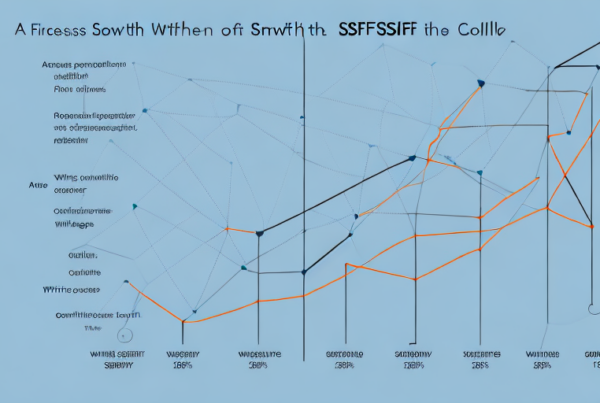If you’re looking for ways to boost your retirement savings and take control of your financial future, SMSF investing in 2023 may be an ideal option to consider. This article outlines the key benefits of SMSF investing and offers tips for creating a successful investment strategy.
Understanding SMSF Investing
Before diving into the benefits of SMSF investing, it’s important to define what SMSF investing is and how it works.
SMSF stands for Self-Managed Super Fund, which is a type of retirement savings account that allows you to manage your investments independently. By setting up an SMSF, you become the trustee and take full responsibility for the fund’s investment decisions.
One of the key benefits of SMSF investing is that it gives you greater control over your retirement savings. Instead of relying on a fund manager to make investment decisions on your behalf, you can make your own decisions based on your personal financial goals and risk tolerance.
How SMSF Investing Works
To set up an SMSF, you need to form a trust and appoint yourself as the trustee. This means that you are responsible for managing the fund and making investment decisions on behalf of all members of the fund. You will also need to ensure that the fund complies with all relevant laws and regulations.
Once the trust is established, you can roll over your existing superannuation funds and start making your own investment decisions. SMSFs can invest in a wide range of assets, including stocks, property, and alternative investments like cryptocurrency or art.
It’s important to note that SMSF investing comes with a higher level of responsibility and requires a greater level of knowledge and expertise than traditional superannuation funds. You will need to keep detailed records of all transactions, ensure that the fund is properly audited each year, and make sure that all investments are made in accordance with the fund’s investment strategy.
Types of SMSF Investments
There are several types of SMSF investments to consider, including direct investments, managed funds, and property.
Direct investments involve purchasing stocks, bonds, or other assets directly. This can give you greater control over your investments and can potentially lead to higher returns. However, it also comes with a higher level of risk, as the value of individual assets can be more volatile than a diversified portfolio.
Managed funds pool together funds from multiple investors to invest in a range of assets. This can provide greater diversification and potentially reduce risk. However, it also means that you have less control over your investments and may be subject to higher fees and charges.
Property investments can include residential or commercial property, which can provide a steady stream of rental income and capital gains. However, property investments also come with their own set of risks, including the potential for vacancies, maintenance costs, and fluctuations in property values.
Ultimately, the type of SMSF investment that is right for you will depend on your personal financial goals, risk tolerance, and level of expertise. It’s important to seek professional advice before making any investment decisions and to regularly review your investment strategy to ensure that it remains aligned with your goals.
Top Reasons to Consider SMSF Investing in 2023
Greater Control Over Your Retirement Funds
One of the main benefits of SMSF investing is the control it gives you over your retirement funds. You can choose your own investments, manage risk, and monitor performance on your own terms. This level of control can help you achieve your retirement goals more effectively.
For example, if you have a passion for a particular industry or investment type, you can invest your SMSF funds in that area. This allows you to align your investments with your interests and values, which can lead to greater satisfaction and a sense of purpose in your retirement planning.
Additionally, SMSF investing allows you to react quickly to market changes and adjust your investments accordingly. This flexibility can help you avoid losses and take advantage of new opportunities as they arise.
Diversification Opportunities
With SMSF investing, you have a wide range of investment options to choose from, which can help diversify your portfolio and reduce risk. By putting your money into multiple investment types, you can buffer any losses in one area with gains in another, leading to more stable returns over time.
Some popular investment options for SMSFs include property, shares, and managed funds. By diversifying your investments across these areas, you can benefit from the unique advantages of each asset class and minimize your exposure to any one type of risk.
Furthermore, SMSFs can invest in overseas markets, providing even greater diversification opportunities and potential for higher returns.
Tax Benefits and Concessions
SMSFs also offer a range of tax benefits and concessions that can help you boost your retirement savings. For example, if you invest in a rental property through your SMSF, you can claim tax deductions for expenses such as repairs, maintenance, and property management fees.
Additionally, SMSFs are taxed at a lower rate than individual taxpayers, which can help you save money and grow your retirement fund more quickly. SMSFs also offer greater flexibility in terms of when and how you withdraw your funds, allowing you to optimize your retirement income and minimize your tax liability.
Potential for Higher Returns
Another key benefit of SMSF investing is the potential for higher returns. By taking control of your investments and making informed decisions, you can optimize your portfolio for growth and maximize potential profits. This can help you build a retirement nest egg more quickly and achieve your goals sooner.
Furthermore, SMSF investing allows you to take advantage of investment opportunities that may not be available through traditional superannuation funds. For example, you may be able to invest in start-ups or early-stage companies that have the potential for high growth and returns.
Overall, SMSF investing offers a range of benefits that can help you achieve your retirement goals more effectively. By taking control of your investments, diversifying your portfolio, and leveraging tax benefits and concessions, you can build a strong financial foundation for your future.
SMSF Investment Strategies for 2023
Self-managed super funds (SMSFs) have become increasingly popular in recent years, as Australians seek greater control over their retirement savings. However, managing your own super fund requires careful planning and a sound investment strategy to ensure your financial future is secure. Here are some key SMSF investment strategies to consider in 2023.
Assessing Your Risk Tolerance
Before embarking on an SMSF investment strategy, it’s important to assess your risk tolerance. This involves identifying how much risk you’re willing to take on to achieve your investment objectives. Factors to consider include your age, financial goals, income, and the types of investments you’re interested in.
For example, if you’re younger and have a longer investment horizon, you may be willing to take on more risk in pursuit of higher returns. On the other hand, if you’re nearing retirement and are more focused on preserving your capital, you may prefer a more conservative investment approach.
Choosing the Right Asset Allocation
Asset allocation is another critical factor in SMSF investing. This involves balancing your investments across different asset classes to minimize risk and maximize returns. A well-diversified SMSF portfolio might include stocks, bonds, property, and alternative investments like cryptocurrency or art.
When choosing your asset allocation, it’s important to consider your risk tolerance and investment objectives. For example, if you’re more risk-averse, you may want to allocate a larger portion of your portfolio to bonds or cash, which are typically less volatile than stocks. Conversely, if you’re seeking higher returns and are comfortable with more risk, you may want to allocate a larger portion of your portfolio to stocks or alternative investments.
Incorporating Alternative Investments
Alternative investments can be a valuable addition to an SMSF portfolio. These types of investments include alternative assets like commodities, hedge funds, and private equity. By incorporating alternative investments into your SMSF, you can further diversify your portfolio and potentially boost returns over time.
However, it’s important to note that alternative investments can also be riskier and more complex than traditional assets like stocks and bonds. Before incorporating alternative investments into your SMSF, it’s important to do your research and seek professional advice to ensure they align with your investment objectives and risk tolerance.
Rebalancing Your Portfolio
Regularly rebalancing your portfolio is essential in SMSF investing. This involves reviewing your portfolio periodically and adjusting your investments to maintain the desired asset allocation. By rebalancing your portfolio, you can ensure that your investments remain aligned with your objectives and risk tolerance.
For example, if your stocks have performed well and now make up a larger portion of your portfolio than you originally intended, you may need to sell some of your stocks and reinvest the proceeds in other asset classes to maintain your desired asset allocation.
In conclusion, SMSF investing requires careful planning and a sound investment strategy to ensure your financial future is secure. By assessing your risk tolerance, choosing the right asset allocation, incorporating alternative investments, and regularly rebalancing your portfolio, you can build a diversified SMSF portfolio that aligns with your investment objectives and risk tolerance.
Navigating SMSF Regulations and Compliance
Understanding the SMSF Trustee Responsibilities
As an SMSF trustee, you are responsible for complying with all relevant regulations and legislation surrounding SMSF investing. This includes keeping proper records, submitting annual tax returns, and ensuring that your investments align with your trust deed and investment strategy.
Staying Up-to-Date with Regulatory Changes
The rules and regulations governing SMSF investing can change over time, so it’s important to stay up-to-date with any changes in legislation or compliance requirements. You can do this by accessing SMSF regulatory guides and seeking expert advice from a qualified SMSF professional.
Ensuring Proper Record-Keeping and Reporting
Finally, keeping proper records and reporting on your SMSF investments is essential for compliance and regulatory reasons. By maintaining accurate records of your investments, you can demonstrate that you are complying with regulations and avoid any penalties or fines for non-compliance.
Final Thoughts
In summary, SMSF investing in 2023 offers a range of benefits, including greater control over your retirement funds, diversification opportunities, tax benefits and concessions, and the potential for higher returns. Creating a successful SMSF investment strategy involves assessing your risk tolerance, choosing the right asset allocation, incorporating alternative investments, and regularly rebalancing your portfolio. However, navigating SMSF regulations and compliance can be complex, so it’s essential to seek advice from a qualified SMSF professional to ensure that you are meeting all the necessary requirements.




